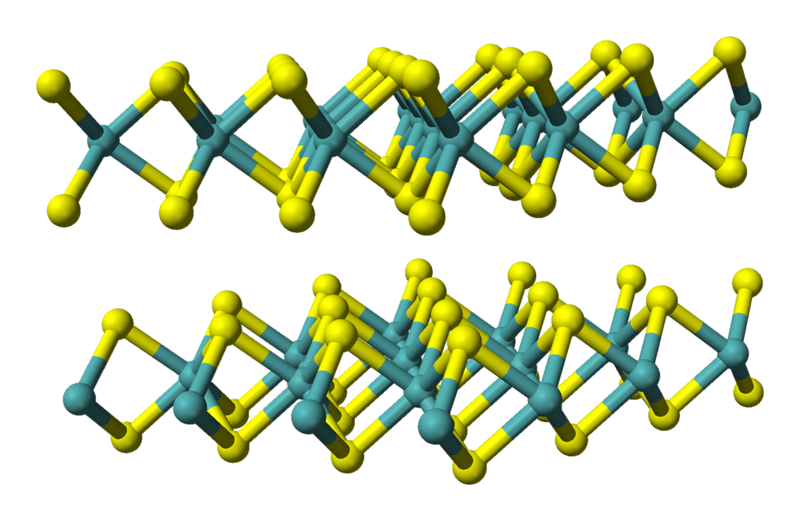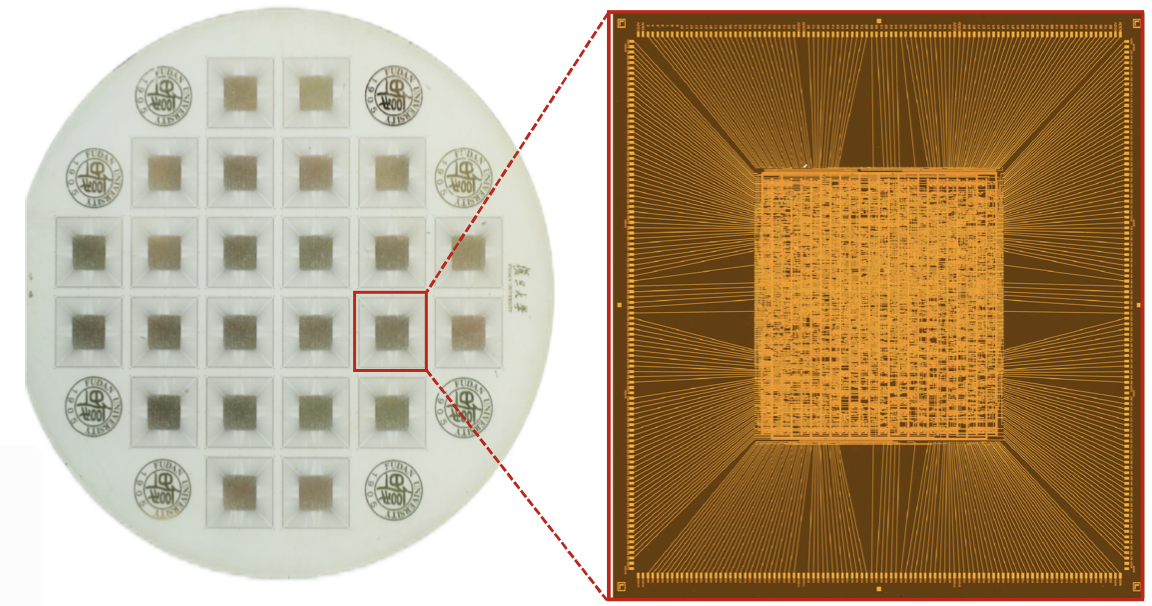It's slow and inefficient, but the semiconductor is only one molecule thick.
On Wednesday, a team of researchers from China used a paper published in Nature to describe a 32-bit RISC-V processor built using molybdenum disulfide instead of silicon as the semiconductor. For those not up on their chemistry, molybdenum disulfide is a bit like graphene: a single molecule of MoS2 is a sheet that is only a bit over a single atom thick, due to the angles between its chemical bonds. But unlike graphene, molybdenum disulfide is a semiconductor.
The material has been used in a variety of demonstration electronics, including flash storage and image sensors. But we've recently figured out how to generate wafer-scale sheets of MoS2 on a sapphire substrate, and the team took advantage of that to build the processor, which they call RV32-WUJI. It can only add single bits at a time and is limited to kilohertz clock speeds, but it is capable of executing the full RISC-V 32-bit instruction set thanks to nearly 6,000 individual transistors.
Going flat
We've identified a wide range of what are termed 2D materials. These all form repeated chemical bonds in more or less a single plane. In the case of graphene, which consists only of carbon, the bonds are all in the same plane, meaning the molecule is as thick as a carbon atom. Molybdenum disulfide is slightly different, as the angle of the chemical bonds is out of plane, resulting in a zig-zag pattern. This means the sheet is slightly thicker than its component atoms.

In any case, the electronic properties of these materials are strictly a product of the orbital configurations of the molecule itself—there is no bulk material from which bulk properties can emerge. While graphene is an excellent conductor, MoS2 is a semiconductor.
Some of the demonstration devices built using MoS2 have used graphene for the conductive material. But the team behind the new work focused on making the experimental hardware that was compatible with silicon manufacturing techniques. This would allow for easier production and could enable the integration of silicon support chips.
Still, there were some distinct challenges involved with MoS2. In normal silicon, a transistor's threshold voltage can be adjusted by doping the silicon—implanting impurities that change the semiconductor's behavior. But there's no way to implant an impurity in a single molecule. All of the semiconductors of RV32-WUJI are n-type, and their performance can't be adjusted. So the researchers here used two different metals (aluminum and gold) for the wiring and adjusted each transistor's threshold voltages through the choice of wiring, as well as the material the wiring was embedded in.
Making chips
On the chip level, the researchers experimented with building many individual devices and then used machine learning to identify the optimal combination of wiring and materials that ensured each individual transistor would reside within the needed performance envelope.
At the transistor level, the device uses what are called depletion-mode inverters. To build functional circuitry, the researchers built and tested a full suite of 25 logic gates and tested them. Eighteen were functional, and the researchers built the chip using those. They used the longest path through the chip to determine the delay they had to account for, which set an upper limit on clock speed in the kilohertz range. The overall yield when finally making the chip was over 99.9 percent, with a chip-level yield of 99.8 percent.
That said, some of the circuitry proved considerably more challenging. The yield on eight-bit registers, for example, was only 71 percent, and that dropped to only 7 percent for a 64-bit register (which required 1,152 transistors).
The resulting processor involves 5,900 individual transistors and is capable of implementing the full 32-bit version of the RISC-V instruction set, which necessarily means it includes sophisticated circuitry like the RISC-V instruction decoder. At the same time, some aspects are intentionally kept simple; while it can perform the addition of two 32-bit numbers, it does so by operating a single bit at a time, meaning it takes 32 clock cycles to perform the operation. This also required on-board buffers to store the intermediate results.
Still, it works, and the authors argue that it's probably one of the most sophisticated bits of "beyond silicon" hardware yet implemented. That said, they don't expect this technology to replace silicon; instead, they view it as potentially filling some niche needs, like ultra-low-power processing for simple sensors. But if the technology continues to advance, the scope of its potential uses may expand beyond that.
Nature, 2025. DOI: 10.1038/s41586-025-08759-9 (About DOIs).
Hope you enjoyed this news post.
Thank you for appreciating my time and effort posting news every day for many years.
News posts... 2023: 5,800+ | 2024: 5,700+ | 2025 (till end of March): 1,357
RIP Matrix | Farewell my friend ![]()
- Tzcon
-

 1
1



3175x175(CURRENT).thumb.jpg.b05acc060982b36f5891ba728e6d953c.jpg)
Recommended Comments
There are no comments to display.
Join the conversation
You can post now and register later. If you have an account, sign in now to post with your account.
Note: Your post will require moderator approval before it will be visible.